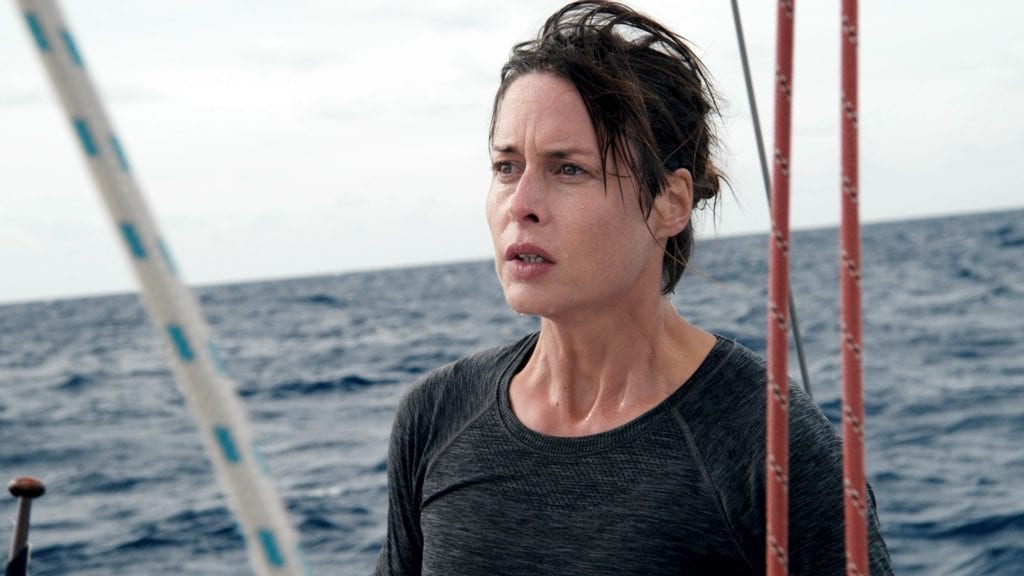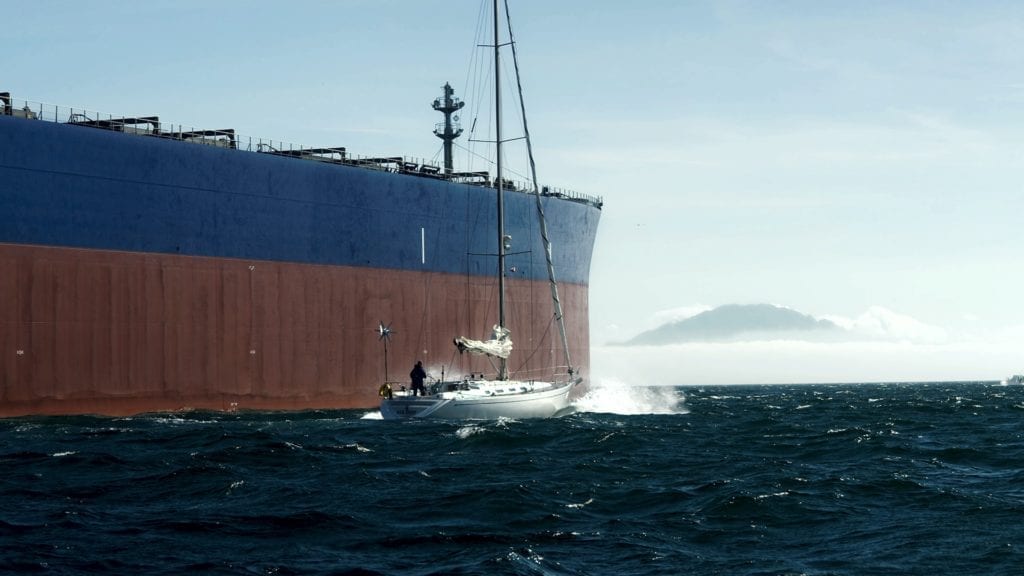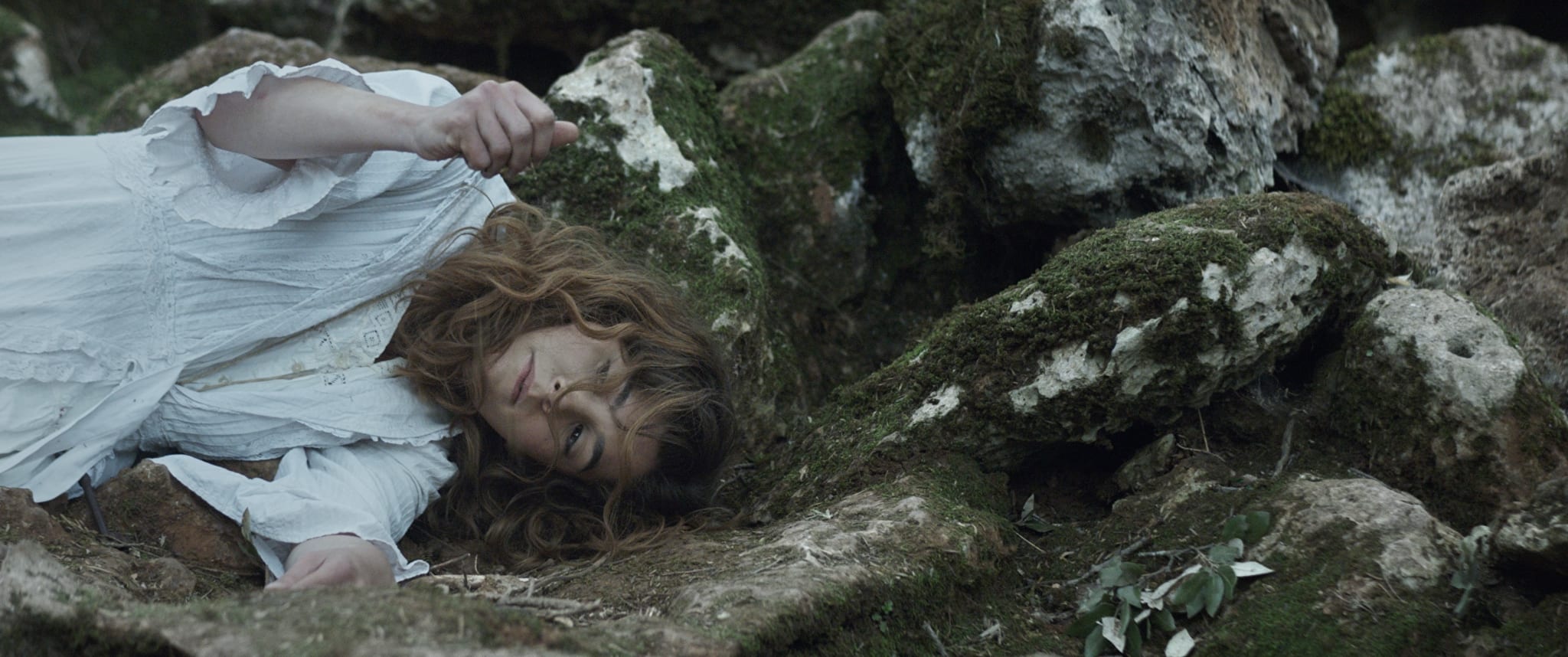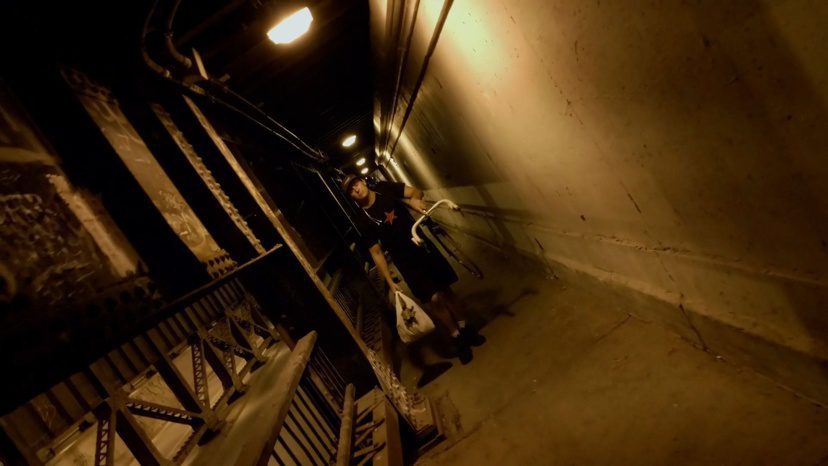If you see someone in need, should you help? That may seem like a simple question, but it is one that we must deal with in many ways almost every day. Often we help. Often we have reasons not to help. Wolfgang Fischer?s film Styx is a moving story of a woman who must make choice after choice that could result in life or death for many people. The film won the Prize of the Ecumenical Jury at the Berlin Film Festival.
Rike (Susanne Wolff), a young emergency doctor, sets off on a vacation of sailing her 11-meter yacht, Asa Gray, to Ascension Island, about half way between Africa and South America. About the first half of the film focuses on the common aspects of the trip: provisioning, setting off, contacting nearby freighters. Then, a storm comes up. Alone on the boat, she must work through the storm to stay afloat. But in the calm after the storm, everything changes.
She awakes to find a derelict trawler a few hundred yards away. It is full of refugees seeking to go to Europe. It is taking on water and could sink. They call to her to rescue them, but there are more than her boat can hold. She radios for help. The Coast Guard responds that they?ll send help and advise her to keep her distance. But after several hours no help comes. Soon some of the refugees begin swimming toward her, many fail and drown, but one, a boy about 12 (Gedion Odour Wekesa) barely makes it, and she hauls him aboard, totally exhausted and begins caring for him. More radio messages to authorities, more promises, but still no help. What is she to do?
The title comes from the river that in Greek mythology led from Earth to the Underworld. It was a river that sat between life and death. Those on the trawler were essentially on Charon?s boat on the way to Hades. But in this case they were not without hope, even though the hope fails to materialize.
The name of Rike?s yacht is also interesting. Asa Gray was a 19th Century botanist and friend of Charles Darwin who strove to demonstrate that evolution was not in conflict with religion. There are times within the film that we get the impression that for many of those who are not responding the loss of these lives is just a form of survival of the fittest. Although religion is not overtly included in the story, the morality that is a part of religion does make this very much a story that fits within Asa Gray?s beliefs.
This is a parable of moral obligations. Rike?s legal obligation was fulfilled when she radioed for help. She could have set on her way again. Instead she stayed. When the boy arrived, she gave him extensive medical aid. She sought others to help at various times. She was not satisfied with doing the bare minimum of care for those in need. She put herself at risk in the process.
The film is also a judgment on the way the world is approaching the near global refugee crises. Whether in the Middle East, Europe, or the southern U.S. border, there are those seeking safe, secure lives, but are often met with many official obstacles. Worse, they are met with indifference. Within the film there are those who could come and save those doomed on the trawler: the Coast Guard, freighters. But none are willing to break the policies they have been given. None is willing to question the policies or to judge whether life is more important than rules.
This is a new telling of the Parable of the Good Samaritan (Luke 10:25ff.). Jesus spoke that parable in answer to the question ?Who is my neighbor (who the Law says I must love)?? In the biblical parable there are those who have important reasons for denying aid to an injured traveler. The story has definite racial, religious, and economic components. The hero of the story is the person who not only takes action to help, but goes to great lengths to do so.
As we look at the refugees around the world or at our border?or even when we look at the hungry and homeless in our streets?we need to consider each day how we will act.? Will we choose to pass by on the other side of the road, like some in the Good Samaritan? Will we do the minimum, safe action, as Rike could have done by sailing on after radioing for help? Will we do all we can to aid those in dire straits?
Photos courtesy of Film Movement.








